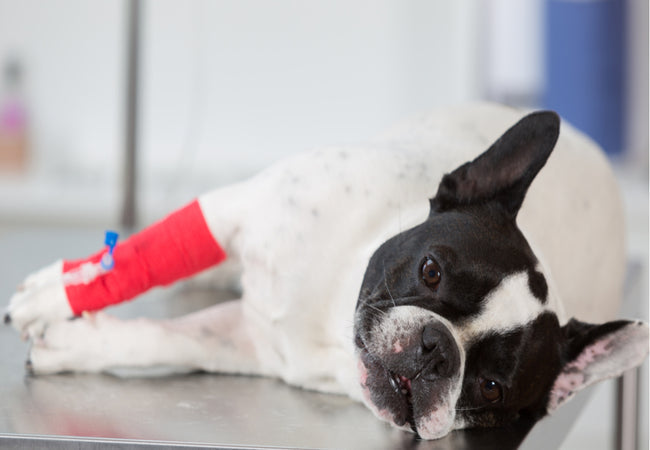Pyloric Stenosis in Dogs – Vet‑Led Guide 2025 🐕🔍

In this article
🩺 Pyloric Stenosis in Dogs – Vet‑Led Guide 2025 🐕🔍
By Dr. Duncan Houston BVSc
Greetings, I’m Dr Duncan Houston, BVSc, founder of Ask A Vet. Pyloric stenosis—a narrowing of the stomach’s exit passage—can cause chronic or projectile vomiting, nutrient loss, and potentially life-threatening complications. In this comprehensive guide, we’ll explore causes, signs, diagnostics (ultrasound, X‑ray, endoscopy), surgical corrections, post-op plans, and prevention strategies to ensure your dog thrives 💙.
📘 What Is Pyloric Stenosis?
Pyloric stenosis refers to thinning of the pyloric canal from stomach to small intestine, often due to thickening (hypertrophy) of the mucosa and/or smooth muscle, resulting in delayed gastric emptying and vomiting.
🚩 Forms & Causes
- Congenital: puppies born with excessive pyloric muscle thickness; signs usually start after weaning, 4–12 months old, are common in brachycephalic breeds like Boxers, Bulldogs, Boston Terriers.
- Acquired: middle-aged to older dogs develop mucosal or muscular thickening for unclear reasons—possible chronic gastritis or high gastrin levels—predisposing breeds include Lhasa Apso, Maltese, Pekingese, Shih Tzu.
- Obstruction mimics: pyloric tumors, foreign bodies, ulcers, and spasms can mimic stenosis.
🚩 Who’s Affected?
Congenital cases are seen in young, brachycephalic dogs; acquired forms appear in older small breeds. Any dog with persistent post-meal vomiting should be evaluated.
⏱️ Key Symptoms to Watch For
- Chronic or intermittent vomiting, often 1–3 hours post-meal; may projectile-style undigested food.
- Regurgitation-like episodes, especially after eating.
- Weight loss, dehydration, and decreased appetite.
- Complications like aspiration pneumonia—coughing, fever.
- Bloating or visible stomach enlargement after meals.
🔍 Diagnostic Approach
- History & exam: note timing of vomiting, weight changes, palpation of the stomach.
- Blood & biochem: may show dehydration; assess kidney/liver function, electrolytes.
- Radiographs: plain X-rays often reveal stomach distension; barium contrast X‑ray shows delayed emptying and narrowing.
- Fluoroscopy: live barium study helps confirm obstruction dynamics.
- Ultrasound: shows thickened pylorus; look for “target”, “donut”, “nipple”, and cervix signs.
- Endoscopy + biopsy: direct visualization plus tissue sampling to rule out ulcers, tumors.
- Surgical exploration: sometimes required to confirm severe or intermittent cases.
💉 Treatment Options
1. Stabilize First
- Rehydrate with IV fluids and correct electrolyte imbalance.
- Control vomiting with antiemetics.
- Feed small amounts of bland, low-fat food repeatedly until surgery.
2. Surgical Repair
Surgery is the mainstay for moderate to severe stenosis:
- Pyloromyotomy (Fredet–Ramstedt): incises the muscle to widen canal.
- Pyloroplasty (Heineke–Mikulicz): flap procedure to enlarge the outlet.
- Gastrojejunostomy or gastroduodenostomy: bypasses area—used in severe or tumor cases.
3. Post-Op Management
- 2–3 days hospitalization; IV fluids, antibiotics, pain meds.
- Start small, frequent soft or liquid meals; gradually transition to normal diet.
- Evaluate for complications—vomiting, ileus.
- Schedule follow-up exams and repeat imaging to confirm gastric emptying.
4. Medical Management (Mild Cases)
For mild stenosis or high-risk dogs unsuited for surgery:
- Smaller, frequent meals, low-fat digestible diets.
- Medications: prokinetics (cisapride, metoclopramide), acid-reducers (famotidine, omeprazole).
- Monitor symptoms; surgery if condition worsens or fails to improve.
📅 Prognosis & Long-Term Care
- Most surgically treated dogs recover fully and resume normal life.
- Mild recurrences may need diet changes or medication adjustments.
- Serious cases (tumors) have variable outcomes depending on pathology.
- Long-term prognosis for congenital and acquired forms post-surgery is excellent.
🏡 Home Care & Owner Tips
- Stick to small, frequent meals. Avoid large servings.
- Use easily digestible, low-fat diets as recommended.
- Prevent bloat by feeding slowly and avoiding exercise immediately after meals.
- Monitor hydration and appetite closely.
- Track vomit episodes and report any changes promptly.
- Maintain rechecks with vet for weight, imaging, and progress note.
🐾 Ask A Vet Assistance
If you're unsure about symptoms or recovery, consult a veterinarian or Ask A Vet for 24/7 support. Post-op, find feeding bowls with controlled flow and recovery cushions via 💕
✨ Key Takeaways
- Pyloric stenosis—narrowing of the stomach exit—causes delayed emptying and vomiting.
- It can be congenital in young brachycephalics or acquired in older small breeds.
- Diagnosis requires imaging: X‑rays, barium studies, ultrasound, and endoscopy, sometimes.
- Surgical correction (pyloromyotomy/pyloroplasty) has excellent outcomes.
- Supportive care and careful follow-up enable full recovery.
- Post-op diet and lifestyle adjustments help prevent recurrence.
- Early detection and treatment lead to the best prognosis—reach out to your vet or Ask A Vet if you spot symptoms. 🐾❤️
If your dog is vomiting undigested food several hours after eating, especially with weight loss or fatigue—don’t wait. Contact your veterinarian or Ask A Vet promptly. Early diagnosis and timely intervention give your dog the best chance for recovery. 🩺






